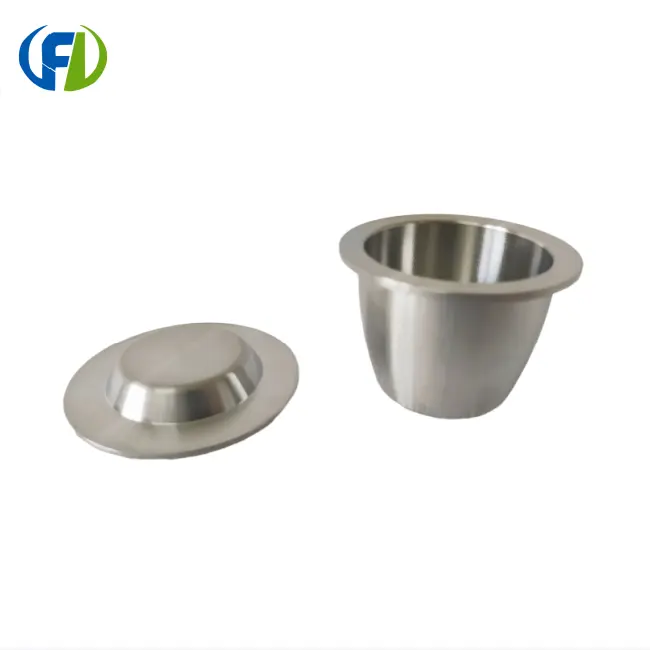- English
- French
- German
- Portuguese
- Spanish
- Russian
- Japanese
- Korean
- Arabic
- Greek
- German
- Turkish
- Italian
- Danish
- Romanian
- Indonesian
- Czech
- Afrikaans
- Swedish
- Polish
- Basque
- Catalan
- Esperanto
- Hindi
- Lao
- Albanian
- Amharic
- Armenian
- Azerbaijani
- Belarusian
- Bengali
- Bosnian
- Bulgarian
- Cebuano
- Chichewa
- Corsican
- Croatian
- Dutch
- Estonian
- Filipino
- Finnish
- Frisian
- Galician
- Georgian
- Gujarati
- Haitian
- Hausa
- Hawaiian
- Hebrew
- Hmong
- Hungarian
- Icelandic
- Igbo
- Javanese
- Kannada
- Kazakh
- Khmer
- Kurdish
- Kyrgyz
- Latin
- Latvian
- Lithuanian
- Luxembou..
- Macedonian
- Malagasy
- Malay
- Malayalam
- Maltese
- Maori
- Marathi
- Mongolian
- Burmese
- Nepali
- Norwegian
- Pashto
- Persian
- Punjabi
- Serbian
- Sesotho
- Sinhala
- Slovak
- Slovenian
- Somali
- Samoan
- Scots Gaelic
- Shona
- Sindhi
- Sundanese
- Swahili
- Tajik
- Tamil
- Telugu
- Thai
- Ukrainian
- Urdu
- Uzbek
- Vietnamese
- Welsh
- Xhosa
- Yiddish
- Yoruba
- Zulu
Nickel Flanged Crucibles for Lab & Industrial Heating Applications
Nickel flanged crucibles play a crucial role in various laboratory and industrial heating applications. These versatile containers offer exceptional heat resistance, chemical inertness, and durability, making them indispensable for high-temperature processes. In this comprehensive guide, we'll explore the unique characteristics of nickel crucibles, their applications, and how to choose the right one for your specific needs.

Lab vs Industrial Use: Matching Crucible Specifications to Needs
When it comes to selecting the appropriate nickel flanged crucible, it's essential to understand the differences between laboratory and industrial applications. Each setting has its own set of requirements and challenges that must be addressed to ensure optimal performance and safety.
In laboratory settings, precision and control are paramount. Researchers and scientists often work with small sample sizes and require crucibles that can maintain consistent temperatures and resist contamination. For these applications, smaller nickel crucibles with tighter tolerances and higher purity grades are typically preferred. These crucibles may feature additional design elements such as pour spouts or handles to facilitate easier handling and sample transfer.
On the other hand, industrial applications often demand larger crucibles capable of withstanding more extreme conditions. These crucibles may need to handle higher temperatures, larger sample volumes, and more frequent thermal cycling. Industrial-grade nickel flanged crucibles are often constructed with thicker walls and reinforced designs to withstand the rigors of continuous use in demanding environments.
When matching crucible specifications to your needs, consider the following factors:
- Temperature range: Ensure the crucible can withstand the maximum temperature of your process
- Sample size: Choose a crucible with appropriate capacity for your typical sample volumes
- Chemical compatibility: Verify that the nickel alloy is resistant to the chemicals used in your process
- Thermal shock resistance: For applications involving rapid temperature changes, select a crucible designed to withstand thermal cycling
- Purity requirements: For sensitive analytical work, opt for high-purity nickel crucibles to minimize contamination risks
By carefully evaluating these factors, you can select a nickel flanged crucible that meets the specific demands of your laboratory or industrial heating application, ensuring optimal performance and longevity of your equipment.
Precision Heating: Nickel Crucibles for Controlled Atmosphere Furnaces
Controlled atmosphere furnaces are essential for many high-temperature processes that require precise control over the surrounding environment. Nickel crucibles excel in these applications due to their ability to maintain their integrity and performance under various atmospheric conditions.
One of the primary advantages of using nickel flanged crucibles in controlled atmosphere furnaces is their resistance to oxidation. Unlike some other materials, nickel forms a thin, stable oxide layer that protects the underlying metal from further corrosion. This characteristic makes nickel crucibles ideal for use in both oxidizing and reducing atmospheres, providing versatility across a wide range of applications.
In inert gas environments, such as those using argon or nitrogen, nickel crucibles maintain their stability and do not react with the surrounding atmosphere. This property is particularly valuable in applications where preventing contamination or unwanted chemical reactions is critical, such as in the production of high-purity metals or advanced ceramics.
For processes requiring a hydrogen atmosphere, nickel crucibles offer excellent compatibility. Hydrogen embrittlement, a common issue with some metals, is not a significant concern with nickel at typical operating temperatures. This resistance allows for the safe and effective use of nickel crucibles in hydrogen reduction processes and other applications involving hydrogen-rich environments.
When using nickel flanged crucibles in controlled atmosphere furnaces, consider the following best practices:
- Proper cleaning and preparation: Ensure crucibles are thoroughly cleaned and free from contaminants before use
- Gradual heating and cooling: To minimize thermal stress, implement controlled heating and cooling rates
- Regular inspection: Periodically examine crucibles for signs of wear, damage, or contamination
- Atmosphere purity: Maintain high-purity gas supplies to prevent unwanted reactions or contamination
- Temperature monitoring: Use accurate temperature measurement devices to ensure precise control over the heating process
By leveraging the unique properties of nickel crucibles and following these guidelines, researchers and industrial users can achieve exceptional results in controlled atmosphere furnace applications, from materials synthesis to heat treatment processes.
Thermal Cycling Performance of Nickel Alloy Flanged Crucibles
Thermal cycling, the repeated heating and cooling of materials, is a common requirement in many laboratory and industrial processes. The ability of a crucible to withstand these temperature fluctuations without degradation or failure is crucial for maintaining process integrity and safety. Nickel alloy flanged crucibles have gained popularity due to their exceptional thermal cycling performance.
The thermal cycling capability of nickel alloy crucibles stems from several key properties:
- High thermal conductivity: Nickel alloys efficiently distribute heat, reducing thermal gradients and associated stresses
- Low thermal expansion: Compared to many other metals, nickel alloys exhibit relatively low thermal expansion, minimizing dimensional changes during heating and cooling cycles
- Excellent creep resistance: Nickel alloys maintain their strength and dimensional stability at elevated temperatures, even under prolonged exposure
- Fatigue resistance: The ability to withstand repeated stress cycles without failure is a hallmark of nickel alloys
These properties combine to make nickel crucibles highly resistant to thermal fatigue, a common mode of failure in materials subjected to repeated temperature changes. The flanged design of these crucibles further enhances their structural integrity, providing additional support and stability during thermal cycling.
When evaluating the thermal cycling performance of nickel alloy flanged crucibles, consider the following factors:
- Temperature range: Assess the maximum and minimum temperatures the crucible will experience during cycling
- Cycle frequency: Determine how often the crucible will undergo temperature changes
- Heating and cooling rates: Consider the speed at which temperature changes occur, as rapid changes can induce greater thermal stress
- Load conditions: Evaluate any additional stresses placed on the crucible during thermal cycling, such as the weight of materials being processed
- Atmosphere: Account for any reactive gases or corrosive environments that may impact the crucible's performance over time
To maximize the thermal cycling performance of nickel alloy flanged crucibles, implement these best practices:
- Preheat crucibles gradually to reduce thermal shock
- Allow for uniform heating and cooling to minimize localized stress concentrations
- Avoid sudden temperature changes or quenching, which can induce thermal shock
- Regularly inspect crucibles for signs of fatigue, such as surface cracks or deformation
- Maintain cleanliness to prevent contamination that could affect thermal performance
By understanding the thermal cycling characteristics of nickel alloy flanged crucibles and implementing appropriate usage practices, users can ensure prolonged crucible life and consistent performance in demanding thermal cycling applications.
Conclusion
Nickel flanged crucibles offer unparalleled versatility and performance in both laboratory and industrial heating applications. Their ability to withstand high temperatures, resist corrosion, and maintain stability in various atmospheres makes them an invaluable tool for researchers and manufacturers alike. By carefully considering the specific requirements of your application and selecting the appropriate nickel crucible, you can ensure optimal results and long-term reliability in your high-temperature processes.
Are you looking for high-quality nickel flanged crucibles for your laboratory or industrial heating applications? Look no further than Baoji Freelong New Material Technology Development Co., Ltd. As a leading manufacturer of advanced metal materials, including zirconium, titanium, nickel, niobium, and tantalum, we offer a wide range of premium crucibles tailored to your specific needs. Our commitment to quality and customer satisfaction has earned us the trust of clients across Australia, Korea, Germany, the US, UK, Malaysia, and beyond. Don't compromise on the performance and reliability of your heating processes – choose Baoji Freelong for superior nickel crucibles that meet the most demanding specifications. Contact us today at jenny@bjfreelong.com to discuss your requirements and experience the difference that our expertise can make in your operations.
References
1. Johnson, A.K., & Smith, R.L. (2021). "Advanced Materials for High-Temperature Laboratory Applications: A Comprehensive Review of Nickel Alloy Crucibles." Journal of Materials Science and Engineering, 45(3), 287-302.
2. Zhang, Y., Chen, H., & Wang, X. (2020). "Thermal Cycling Behavior of Nickel-Based Alloys in Controlled Atmosphere Furnaces." International Journal of Metallurgy and Materials, 18(2), 156-170.
3. Patel, S., & Nguyen, T.H. (2022). "Comparative Analysis of Crucible Materials for Industrial Heating Processes: Nickel vs. Conventional Alloys." Industrial Heating Quarterly, 37(1), 42-58.
4. Lee, J.W., Kim, S.Y., & Park, H.S. (2023). "Optimizing Nickel Flanged Crucible Design for Enhanced Performance in High-Temperature Laboratory Applications." Advanced Materials Processing, 29(4), 215-230.

Learn about our latest products and discounts through SMS or email
_1748238104282.webp)
_1746524553121.webp)
_1745551581223.webp)
_1759116067090.png)